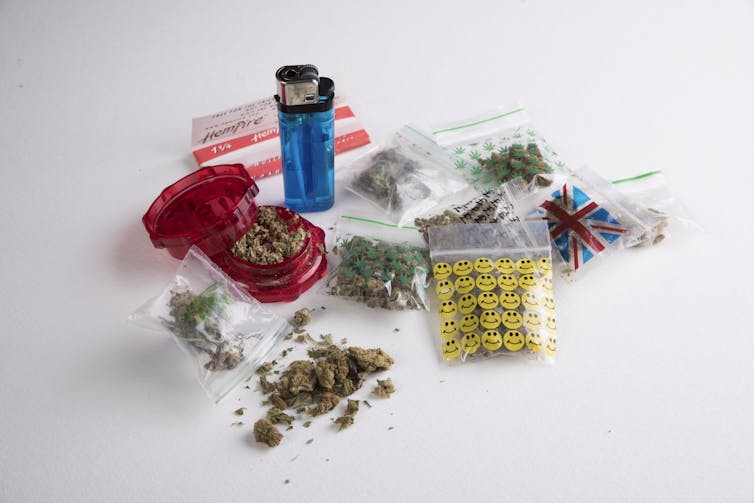This article was originally published on The Conversation on February 27, 2018 and written by King’s College London researcher Marta Di Forti.
Fully 94% of the cannabis seized by British police in 2016 was high-potency cannabis known as “skunk”, our latest research reveals. By comparison, skunk comprised 85% of cannabis seized in 2008, and just 51% in 2005. This should be cause for alarm as previous research has shown that using skunk increases a person’s risk of developing psychosis, roughly threefold, compared with those who never use cannabis. Cannabis potency is also linked to rising rates of treatment for cannabis-related problems. Cannabis now accounts for around 50% of all first-time admissions to specialist drug treatment centres.
There are broadly three preparations of cannabis. The first is skunk, which is made from the unpollinated flowers of the female plant and contains high levels of the active ingredient tetrahydrocannabinol (THC). The second is traditional herbal cannabis, which is made from the flowers and leaves of the female cannabis plant. It has less THC than skunk and also contains cannabidiol (CBD), which is known to lessen the risk of psychosis caused by TCH. The third form is hashish, which is the made from cannabis resin. As with herbal cannabis, hashish has less THC than skunk and it does contain some CBD.
Since the 2008 survey of cannabis seized by the police, we have been in the dark about changes to the types of cannabis and their potency available across England. To address this issue, we set out to quantify the relative proportions of skunk, traditional herbal cannabis and hashish being used at the time of police arrest in 2015 and 2016 in London, Sussex, Kent, Derbyshire and Merseyside.

David Potter
Although skunk now clearly dominates the market, the potency has remained about the same since 2005, with average concentration of THC at 14% and no detectable traces of CBD.
An important change, however, is the sharp reduction in availability of weaker cannabis resin (hashish): from 43% in 2005, to 14% in 2008, and then just 6% in 2016 (and only 1% in London). The average concentration of THC in resin has also increased from 4% to 6%. We also found a reduction in CBD content in cannabis resin since 2005-2008 with a consequent change in the ratio of THC to CBD – no longer the benign 1:1, but now 3:1.
The disappearance of choice
The disappearance of a type of cannabis rich in CBD, which is almost entirely absent from skunk, poses a significant hazard to users’ mental health, and reduces their option to choose more benign forms of the drug.
A recent study even suggested that CBD might help to improve symptoms in patients suffering from a psychosis. This is in contrast with the research showing that daily use of cannabis that is high in THC and lacking in CBD, such as skunk, increases the risk of developing psychotic disorders fivefold.
![]() Our study emphasises the importance of developing public education campaigns on the different types of street cannabis and their potential hazards. Public education is our most powerful tool in primary prevention, as tobacco-harm awareness campaigns have proven.
Our study emphasises the importance of developing public education campaigns on the different types of street cannabis and their potential hazards. Public education is our most powerful tool in primary prevention, as tobacco-harm awareness campaigns have proven.
Marta Di Forti, Clinician Scientist MRC Research Fellow, King’s College London
This article was originally published on The Conversation. Read the original article.
